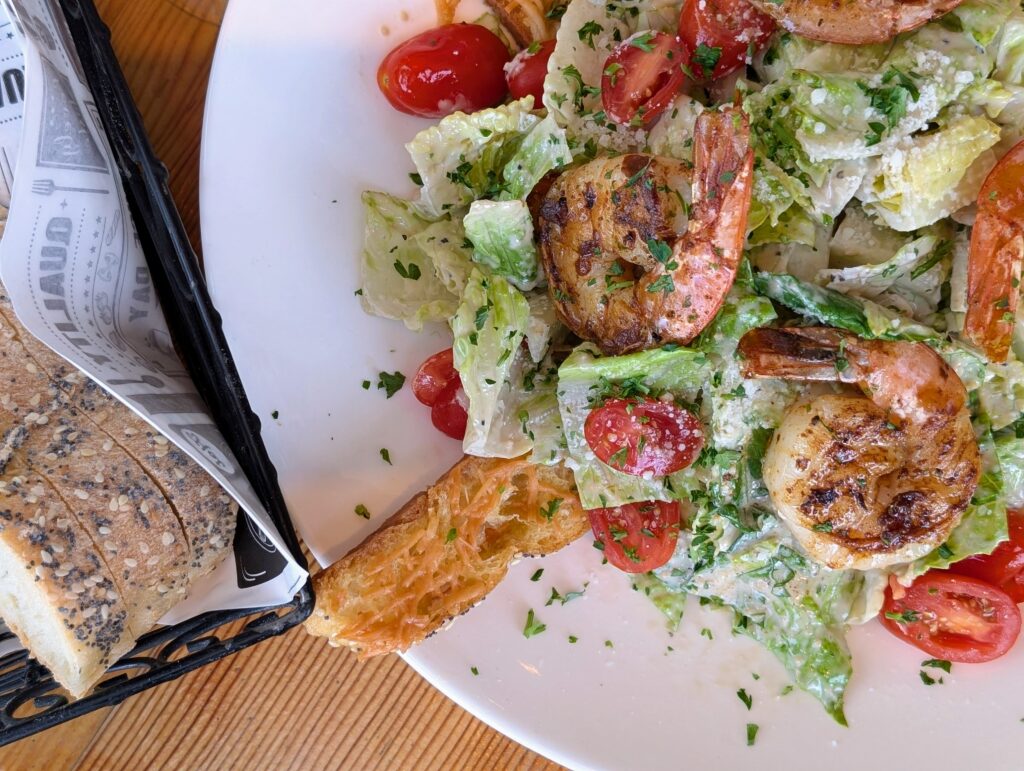
Aug. 8, 2025—A compelling part of reporting a story is seeing where it leads, because it often takes you somewhere other than originally intended.
In this case, the story finds its way from the Pajaro Valley to Carmel to Tijuana and back.
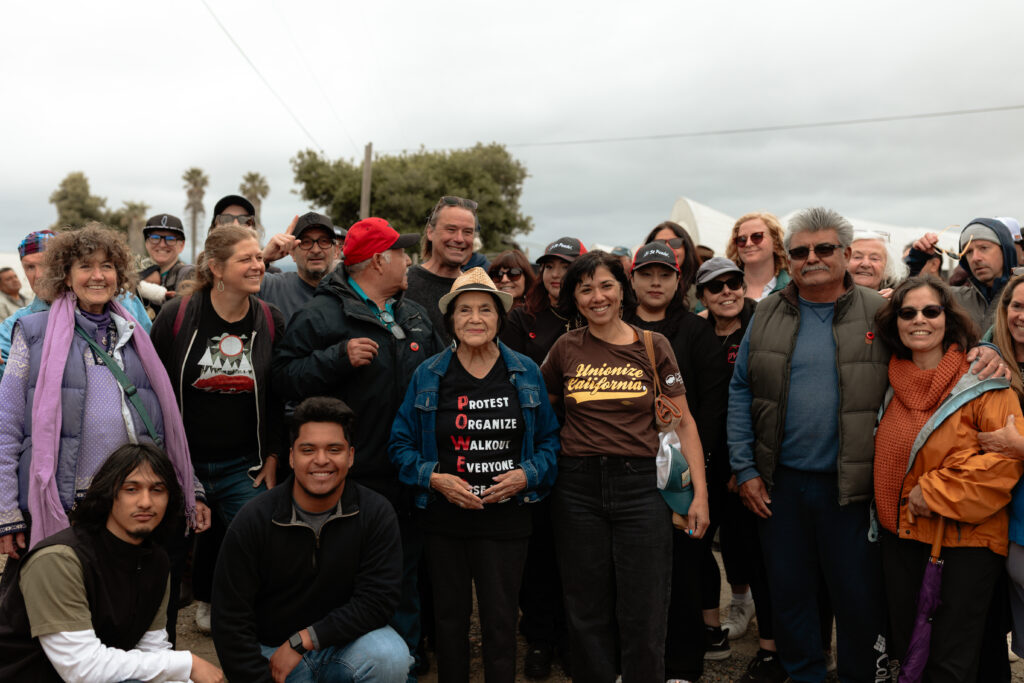
The idea for this tale hatched with a legendary life force in the fight for farmworker rights.
Dolores Huerta stands at a temporary podium on a dirt road in Watsonville, with a farm treated with pesticides on one side, and MacQuiddy Elementary School on the other.
You’d think the juxtaposition would be enough to inspire action, given the links between childhood cancer and chemicals used at the farm, including chloropicrin, malathion and 1,3-dichloropropene.
If that isn’t enough, there’s also the fact Huerta, the 5-foot-tall giant in the United Farm Workers (UFW) movement, still has this self-evident problem to call out.
The moment comes a half century after she launched UFW with Cesar Chavez, and a month after she celebrated her 95th birthday.
“There is no reason [growers] have to use pesticides,” she says. “Organic farmers have proven that you can grow food without it for centuries.”
The gap in reasoning is familiar to the woman who introduced Huerta at the rally, Dr. Ann Lopez.
As Lopez likes to say, “If you’re looking for logic, you’re in the wrong place.”
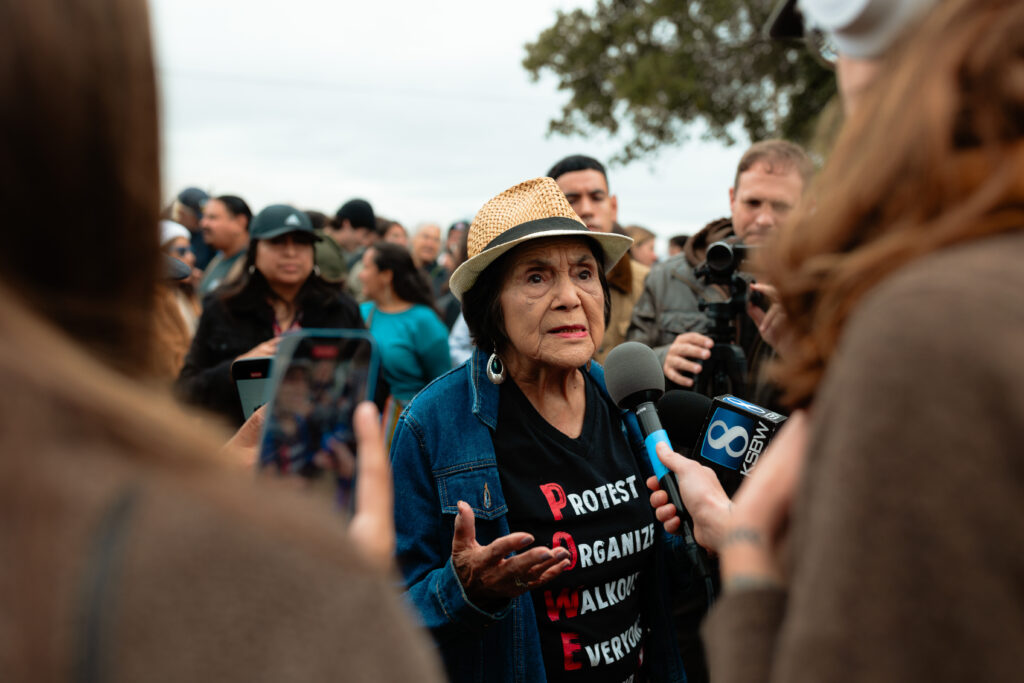
My hope for this column was to resurface the story that passage hails from—”Grounded Solutions: Finding Fairness, Avoiding Pesticides and Advocating Sense in the Pajaro Valley“—since it won’t be on newsstands for more than a few weeks longer, though it should remain front-of-mind for all eaters.
My plan was to consider some of Huerta’s favorite foods, and spotlight a restaurant that uses them well around Monterey Bay, and maybe unearth a Found Treasure, and re-ground readers and myself with some foundational realities of our food system.
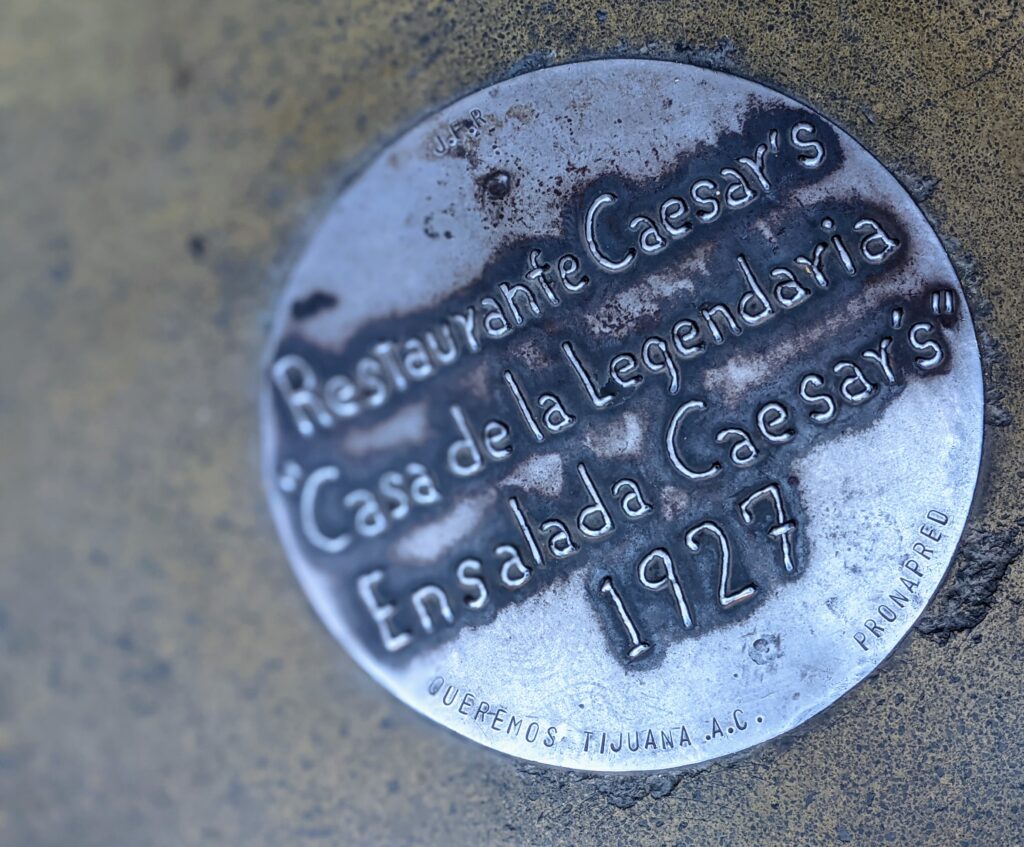
Some research reveals there’s not a ton documented on Huerta’s favorite foods, though there is this from the Fresno Bee: “She loves Mediterranean food, as well as Indian and Asian and, of course, Mexican food.”
(That research also revealed other facts new to me, if unsurprising. A select few include: 1. She was raised in Stockton, California, where her mother owned a small hotel and restaurant serving farmworkers, exposing young Dolores early on to food justice issues; 2. She has collaborated with chef José Andrés to highlight how food, immigration, and labor intersect; and 3. She coined the iconic rallying cry “Sí, se puede” [“Yes, we can”] during Arizona farmworker strikes in 1972.)
Without a clear favored dish to focus on, I took a mini editorial leap, and started thinking about Caesar salads.
Caesar, as in Caesar Chavez, Huerta’s co-founder of the United Farm Workers.
And Caesar, as in the salad that many still think is an Italian dish, but was born in Mexico.

One hundred and one years ago, Caesar salads were invented just over the border from San Diego, in Baja California, at a place that is well worth a pilgrimage, and is walkable from the border (which is quite walkable itself).
Caesar’s Restaurante Bar sits in the heart of TJ’s downtown, and enjoys huge vintage paintings, vested servers, great service, antique fixtures, checkered tile floors and—yes—a buenisima Caesar salad.
There’s not a whole heck of a lot that can improve upon its simple and balanced elegance—anchovy umami, Parmesan richness, Dijon-and-egg creaminess and subtle citrus acidity—except maybe some romaine from the Salinas Valley, where Huerta carried out much of her worker advocacy, and a middle school was named in her honor in 2017.

The next step in the story became clear: Discover who does a dynamite Caesar around the Monterey Bay Area.
My thoughts went to veteran restauranteurs—the Caesar is a lost art?—and landed on one who has been in the game for six decades, and has a gift for advocacy himself.
But I wasn’t expecting Ken Spilfoger to answer the phone when I called Flaherty’s Seafood & Oyster Bar to ask about their Caesar.
“Hello?”
“Hello.”
“Hello.”
Not your typical exchange when ringing a restaurant, I think, while realizing I recognize this graveled New York accent.
“Is this Ken?”
“Who’s asking?!”
“How’s your Caesar salad?”
“It’s the best dressing in town. And people love a good Caesar. It’s one of our best sellers…and with some chicken, or shrimp, or even steak, a lot of [diners] like to make it a meal.”
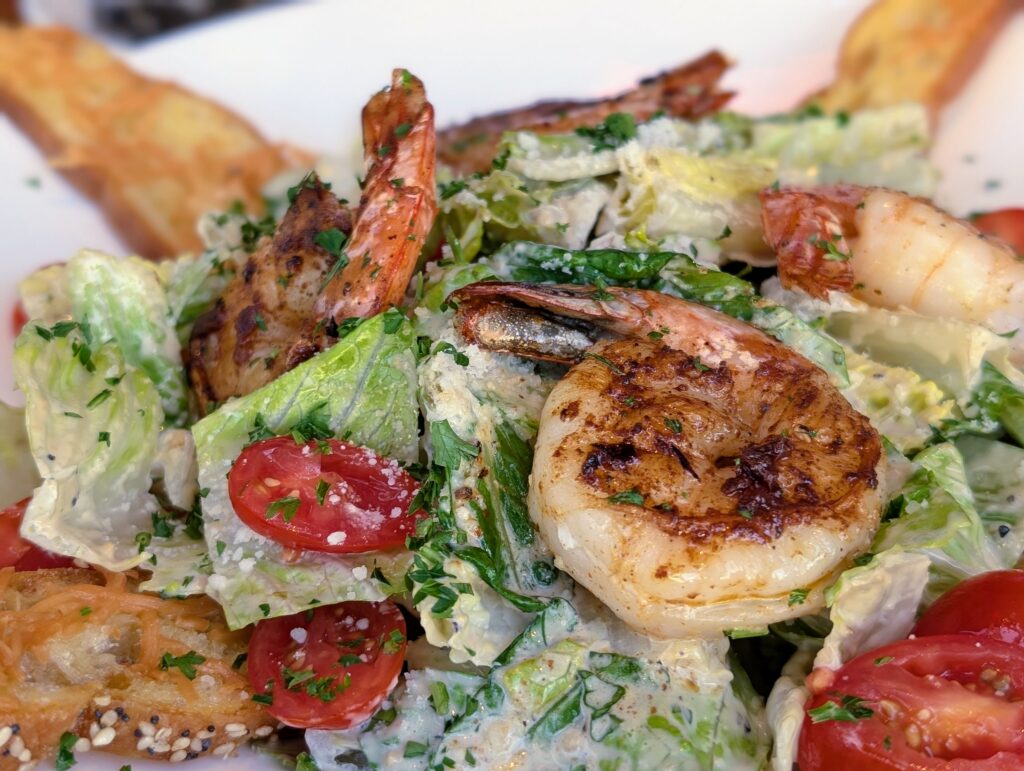
The Caesar at Flaherty’s proves saucy, satisfying and outright delicious. Spilfogel’s so into the house Caesar dressing he gets an additional ramekin of it. (I’d say there’s plenty on there already, but it is nice for dipping the flat housemade cheese croutons.)
Somewhere OG Caesar Cardini—who improvised the dish when he was running out of ingredients—is licking his lips.
But there’s a lot more to recommend Flaherty’s, and that’s just what we ordered, including fresh oysters and a Crab Louie melt.
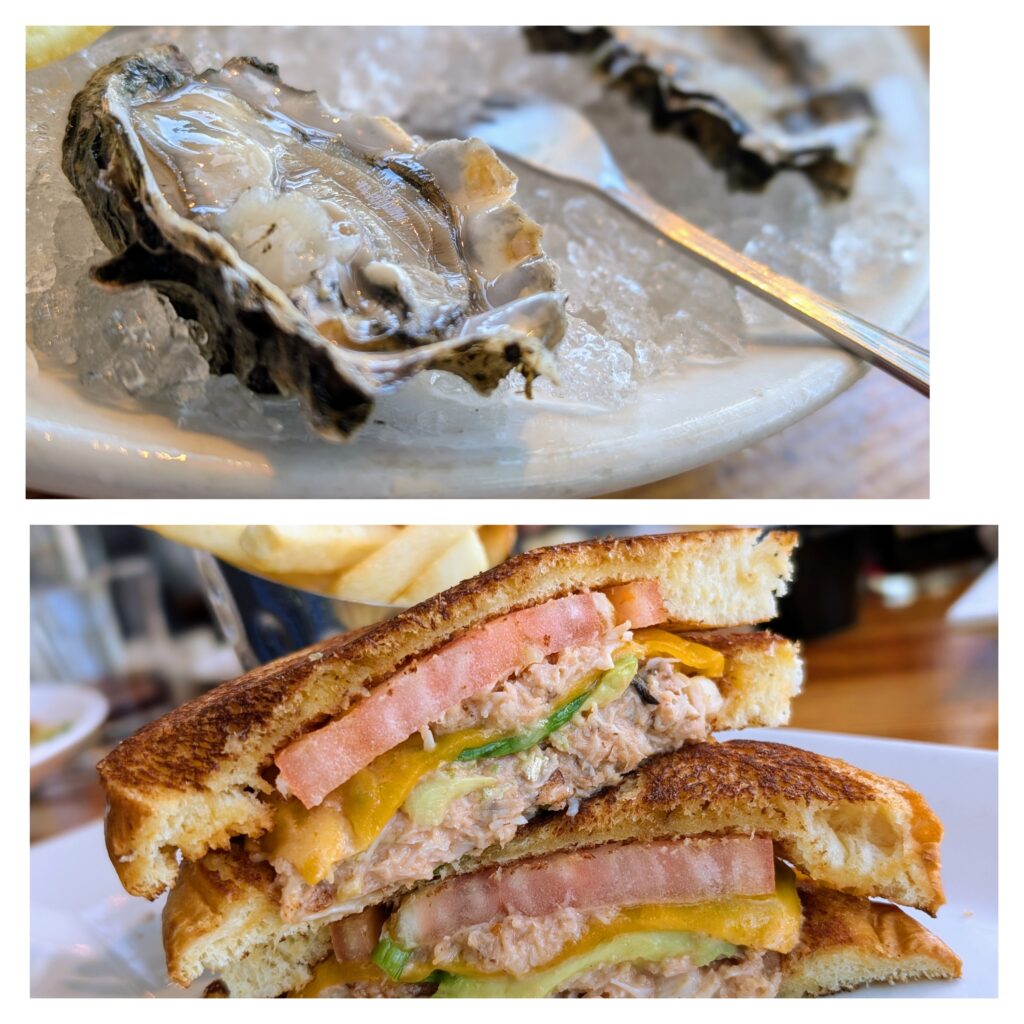
Spilfogel also sent out a sampler of his popular fish and chips, with a side saddle of coconut shrimp, which are a possible add-on to the Caesar.
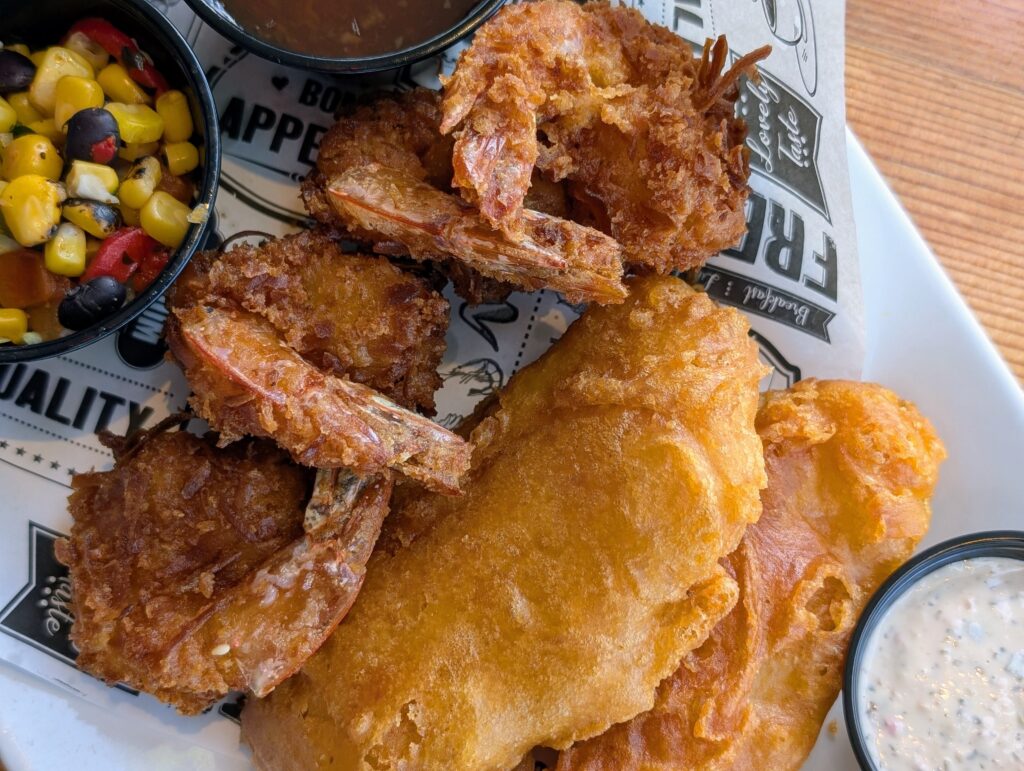
A doggie dish of hamburger, to boot.
(Full disclosure: He comped the meal, over my protests, but it’s his house, so all I could do was tip.)
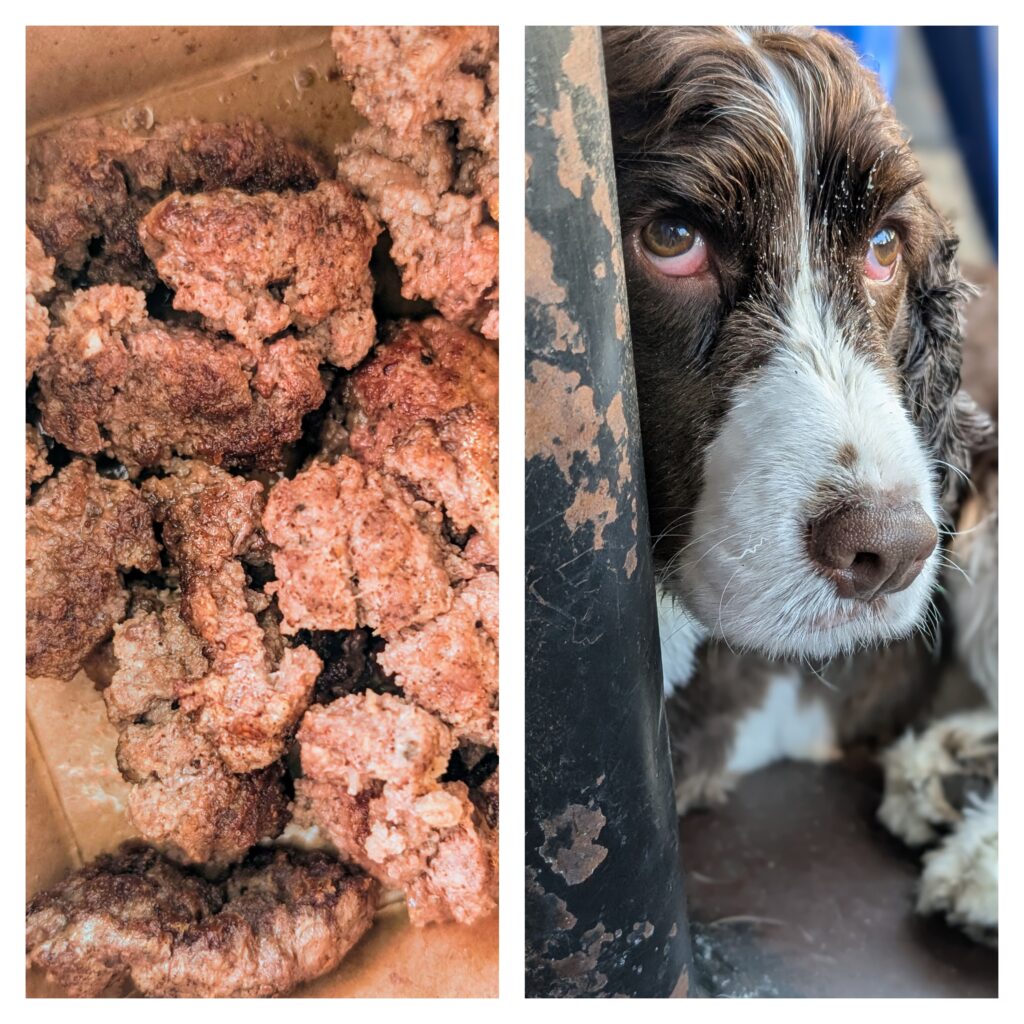
Spilfogel joined our table for part of the meal, and contemporaneous conversation ranged from his start in restaurants at age 11 to him spending around 10 hours at Carmel City Council meetings this week alone.
You’d think he’d be sensible enough to spend his time eating, drinking and hosting, rather than feeling his eyeballs dry out at City Hall.
But he’s pot committed to the cause of pushing Carmel into a more vibrant future, a longtime local leader who chairs the Restaurant Management Committee for Visit Carmel, stays vigilant with the Chamber of Commerce and has frequently gone to bat for new restaurants and housing.
“My efforts are all regarding the future of Carmel, a place I love,” he says. “Being forward thinking gives us the opportunity to have a more livable environment for our workforce, and for our kids to come back and live here—right now it’s virtually impossible.”
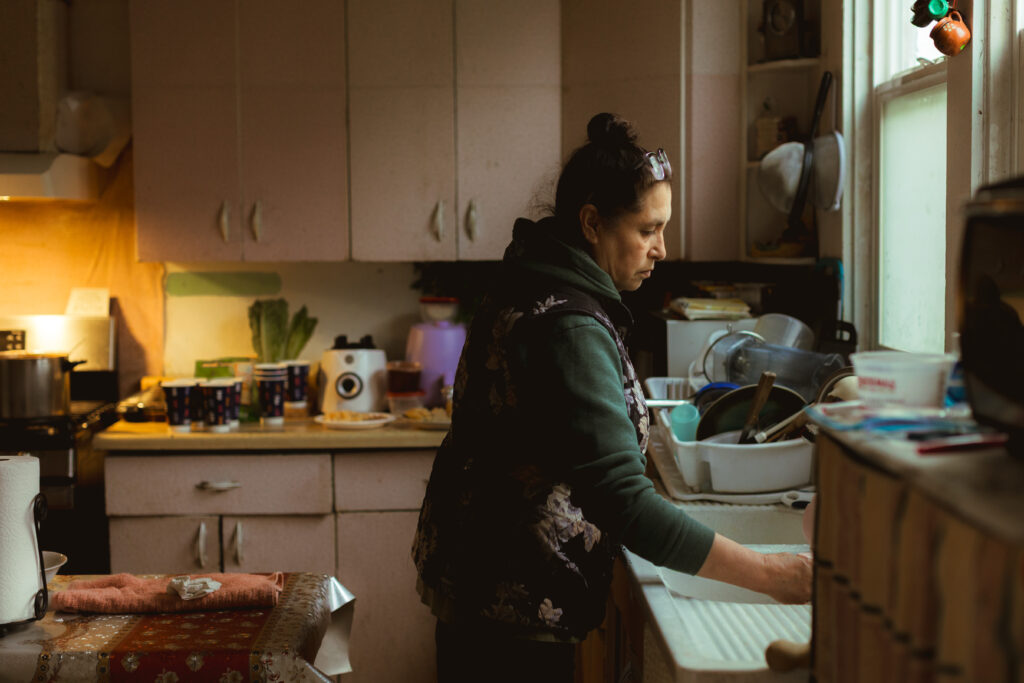
Late in the process of reporting this I realize Dr. Ann Lopez, who directs the Center for Farmworker Families, might know some of Huerta’s favorite foods.
Lopez apologizes in saying she really didn’t know Huerta’s favorites, and we move onto talking about upcoming activities to support farmworker well-being.
Those include CFF offshoot Campaign for Organic & Regenerative Agriculture’s multi-faceted event at Barrios Unidos event in Santa Cruz 3-5pm Sunday, Aug. 24. (Address is 1817 Soquel Ave., on the north side of Seabright in Santa Cruz.)
The event merges live music and local food vendors peddling snacks with a panel Q&A on converting Watsonville to more organic and regenerative farming practices.
Meanwhile CORA’s celebrating a new community-supported-agriculture box program from PASEA, a coalition of 16 organic farmers building independent businesses focused on providing the region with healthy food, now open to subscribers.
The next Farmworker Reality Tour, which helped inspire the Dolores Huerta piece—now available in Spanish if you would be so kind to share with non-English speaking friends—has sold out, but others take place Sept. 7 and Oct. 5.
There are also the ongoing second Friday distribution events that provide basic staples to food-insecure farm laborers, from diapers to beans to blankets. (See below on ways to help.)

The ongoing farmworker saga involves heartbreak and hope.
That crystallizes in ways concerned citizens can help.
Here’s the rundown of opportunities we gathered to accompany the report on the fight against pesticides and for better working conditions, on behalf of farmworkers:
DIGGING IN
Ways you can help protect human and soil health
Some seek to handcuff the hands that feed us, which can be distracting, to put it mildly.
Fortunately, there are positive actions to focus on instead, listed here.
CHECK THE MAP.
The fumigant 1,3-dichloropropene is banned in 34 countries. That’s one of a number of toxins the Campaign for Organic & Regenerative Agriculture (CORA) tracks with colorcoded grids, noting 1 million pounds of pesticides are applied in Santa Cruz County annually, all too often on agricultural fields near schools and homes in the Pajaro Valley.
A seven-panel infographic on CORA’s page at farmworkerfamily.org/cora spotlights the scary-close proximity, which contributes to the county having the second-highest pediatric cancer rates in the state.
TAKE A TOUR.
The homespun Center for Farmworker Families (CFF) voyage moves through organic farms and the Buena Vista Migrant Center, experiences lived and person-to-person interaction.
The insight communicated proves sobering and inspiring, as recent visitor and Jesuit theology professor Dr. Mary E. McGann observes.
”The tour is empowering for those interested in what they can do to help,” she says. “It’s also moving given the incredible sense of courage and endurance the workers—all of them women—convey.”
VOLUNTEER WITHOUT FEAR.
CFF coordinates with Watsonville police to avoid any potential U.S. Immigration and Customs Enforcement (ICE) interference when CFF shares pantry items, detergent, diapers and food, among other items, at its monthly distribution gatherings.
Volunteers are welcome to help gather and disperse goods, farmworkerfamily.org/volunteer-program.
STUDY THE WINDS.
SprayDays California, launched in March 2025, is a first-of-its-kind statewide system that informs when and where restricted pesticide applications will take place, spraydays.cdpr.ca.gov.
SHARE STUFF.
All area locals are encouraged to donate clothes, toiletries, house supplies—basically anything of use—to CFF. “Everything we receive,” one volunteer says, “we give out.”
PROVIDE DIRECT SUPPORT.
CFF accepts tax-deductible donations.
BUY ORGANIC.
Voting no on pesticides can be as simple as prioritizing organic produce.
Fortunately the Monterey Bay area enjoys dozens of mindful growers like Lakeside Organic Gardens, the largest familyowned and -operated, 100% organic vegetable operation in the United States.
In so doing, shoppers can honor the wisdom one old farmer shares with Edible: “Why would you want to eat something a bug wouldn’t?” he asks, adding, “or that would kill it?”
CORA chief Adam Scow offers more motivation: “This isn’t just a public health threat. It’s about fumigating the soil, which kills it. We’re also fighting for the future of farming.”
More at the Center for Farmworker Families and Flaherty’s Seafood Grill & Oyster House.
About the author
Mark C. Anderson, Edible Monterey Bay's managing editor, appears on "Friday Found Treasures" via KRML 94.7 every week, a little after 12pm noon. Reach him via mark@ediblemontereybay.com.
- Mark C. Andersonhttps://www.ediblemontereybay.com/author/markcanderson/
- Mark C. Andersonhttps://www.ediblemontereybay.com/author/markcanderson/
- Mark C. Andersonhttps://www.ediblemontereybay.com/author/markcanderson/
- Mark C. Andersonhttps://www.ediblemontereybay.com/author/markcanderson/



